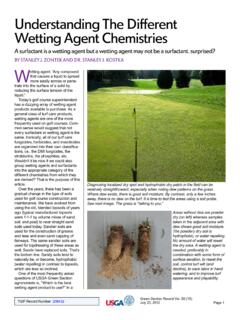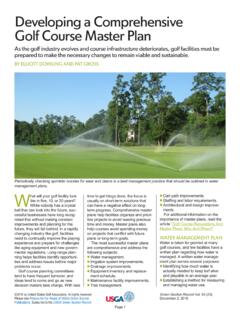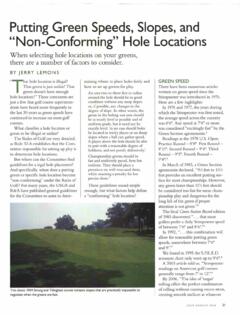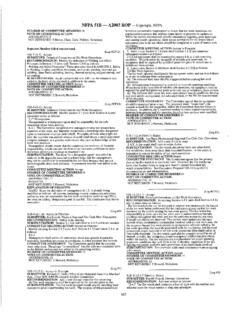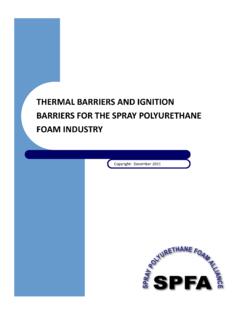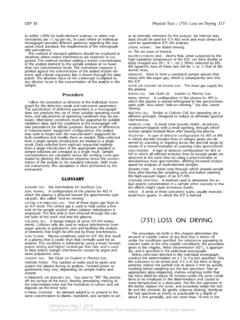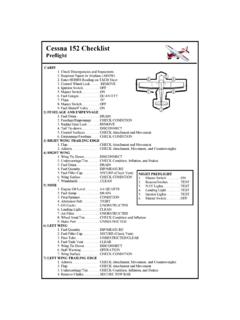Transcription of A5TM D 2974-87 Standard Test Methods for Moisture, Ash ...
1 A5TM D 2974-87 Standard Test Methods for Moisture, Ash, and Organic Matter of Peat and Other Organic Soils American Society for Testing and Materials, 1916 Race St., Philadelphia, PA 19103. Re-printed from the Annual Book of ASTM standards , Copyright ASTM. THIS Standard is issued under the fixed designation D 2974; the number immediately following the designa-tion indicates the year of original adoption or, in the case of revision, the year of last revision. A number in parentheses indicates the year of last reapproval. A superscript epsilon (e) indicates an editorial change since the last revision or reapproval. These test Methods are under the jurisdiction of ASTM Committee D-18 on Soil and Rock and are the direct responsi-bility of Subcommittee on Peats and Related Materials. Current edition approved May 29, 1987.
2 Published July 1987. Originally published as D 2974 - 71. Last previous edition D 2974 -84. 1. Scope These test Methods cover the measure-ment of moisture content , ash content , and organic matter in peats and other organic soils, such as organic clays, silts, and mucks. The values stated in SI units are to be regarded as the Standard . This Standard may involve hazardous materials, operations, and equipment. This Standard does not purport to address all of the safety problems associated with its use. It is the responsibility of the user of this Standard to establish appropriate safety and health practices and determine the applica-bility of regulatory limitations prior to use. 2. Summary of Methods Method A Moisture is determined by drying a peat or organic soil sample at 105 C. The moisture content is expressed either as a percent of the oven dry mass or of the as-received mass.
3 Method B This is an alternative moisture method which removes the total moisture in two steps: (1) evaporation of moisture in air at room temperature (air-drying), and (2) the subsequent oven drying of the air-dried sample at 105 C. This method provides a more stable sample, the air-dried sample, when tests for nitrogen, pH, cation exchange, and the like are to be made. Methods C and D ash content of a peat or organic soil sample is determined by igniting the oven-dried sample from the moisture content determination in a muffle furnace at 440 C (Method C) or 750 C (Method D). The substance remaining after ignition is the ash. The ash content is ex-pressed as a percentage of the mass of the oven-dried sample. Organic matter is determined by sub-tracting percent ash content from 100. 3.
4 Apparatus Oven, capable of being regulated to a constant temperature of 105 5 C. NOTE The temperature of 105 C is quite critical for organic soils. The oven should be checked for "hot spots" to avoid possible ignition of the specimen. Muffle Furnace, capable of producing constant temperatures of 440 C and 750 C. Evaporating Dishes, of high silica or porcelain of not less than 100 mL capacity. Blender, high-speed. Aluminum Foil, heavy-duty. Porcelain Pan, Spoons, and equipment of the like. Desiccator. 4. Preparation of Sample Place a representative field sample on a square rubber sheet, oil cloth, or equivalent material. Reduce the sample to the quantity required by quartering and place in a moisture-proof container. Work rapidly to prevent moisture loss or perform the opera-tion in a room with a high humidity. Moisture content 5.
5 Method A Record to the nearest g the mass of a high-silica or porcelain evaporating dish fitted with a heavy-duty aluminum foil cover. The dish shall have a capacity of not less than 100 mL. Mix thoroughly the representative sample and place a test specimen of at least 50 g in the container described in Crush soft lumps with a spoon or spatula. The thickness of peat in the container should not exceed 3 cm. Cover immediately with the aluminum foil cover and record the mass to the nearest g. Dry uncovered for at least 16 h at 105 C or until there is no change in mass of the sample after further drying periods in excess of 1 h. Remove from the oven, cover tightly, cool in a desiccator, and record the mass. 6. Method A Calculation Calculate the moisture content as follows: Moisture content , % = [(A - B) X 100]/A where: A = mass of the as-received test specimen, g, and B = mass of the oven-dried specimen, g.
6 This calculation is used primarily for agriculture, forestry, energy, and horticultural purposes, and the result should be referred to as the moisture content as a percentage of as-received or total mass. An alternative calculation is as follows: Moisture content , % = [(A-B) X 100]/fl where: A = as-received test specimen, g, and B = mass of the oven-dried specimen, g. This calculation is used primarily for geotechnical purposes, and the result should be referred to as the moisture content as a percentage of oven-dried mass. MARCH/APRIL 1993 31 usedif pH,nitro-gencontent,cationexchangecapaci ty,andthelikeareto be 300g spoonor spatulaandletthesamplecometo least24 h. Stiroccasion-allyto constantvalue,calculatethemoistureremove dduringairdryingas apercentageof representativeportionof theair-driedsamplefor1 to 2 minin a ,ash,nitrogen,cationexchangecapacitytest s, , theequivalentof 50 g of testspecimenon an ,ingrams,of air-driedsampleequivalentto 50g of as-receivedsample,as follows:EquivalentSampleMass,g = [(50X M)/100]where:M = moistureremovedin airdrying,%.
7 A containeras de-scribedin in mufflefurnace, MethodB follows:MoistureContent,%= (50- B) X2where:B = oven-driedsample, a percentageof as follows:MoistureContent,%= [(50- B) X100] a percentageof a coveredhigh-silicaor partof or allof theoven-driedtestspecimenfroma moisturedeterminationin thedishanddeterminethemassof thefurnaceto 440 Candholduntilthespecimenis completelyashed(nochangeof massoccursaftera furtherperiodof heating). ,coolin a desiccator, usedforall a coveredhigh-silicaor partof or all of theoven-driedtestspecimenfroma moisturedeterminationin thedishanddeterminethemassof thefurnaceto 750 Candholduntilthespecimenis completelyashed(nochangeof massoccursaftera furtherperiodof heating). ,coolin a desiccator, usedwhenpeatsarebeingevaluatedforuseas a follows:AshContent,%= (CX100)/Bwhere:C = ash,g, andB = oven-driedtestspecimen, organicmat-terbydifference,as follows:Organicmatter,%= Dwhere:D = ashcontent,%.
8 ,to pro-portionofas-receivedmassor a percentageof a percentageof oven-driedmassasfollows:(a) Below100%to thenearest1%.(b) Between100%and500%to thenearest5%.(c) Between500%and1000%to thenear-est10%.(d) Above1000%to thenearest20%. developinga positionrespectingthevalidityof thisstandardareexpresslyadvisedthatdeter minationof thevalidityof anysuchpatentrights,andtheriskof infringementof suchrights, subjectto revisionat anytimeby the responsibletechnicalcommitteeandmustbe reviewedeveryfiveyearsandifnot revised,eitherreapprovedor invitedeitherfor revisionof thisstandardor for additionalstandardsandshouldbe addressedto a meetingof the responsibletechnicalcommittee, youfeelthatyourcommentshavenotreceiveda fairhearing,youshouldmakeyourviewsknownt o the ASTMC ommitteeonStandards,1916 RaceSt., Philadelphia, Soundnessof AggregatesbyUseof SodiumSulfateor MagnesiumSulfateftSTMC-131-89 StandardTestMethodfor Resistanceto Degradationof Small-SizeCoarseAggregateby AbrasionandImpactin theLosAngelesMachineASTM proceduresC-88-90andC-131-89arespecialsi tuationteststhatrarelywillbe required, TestingandMaterials,1916 RaceStreet,Philadelphia.
